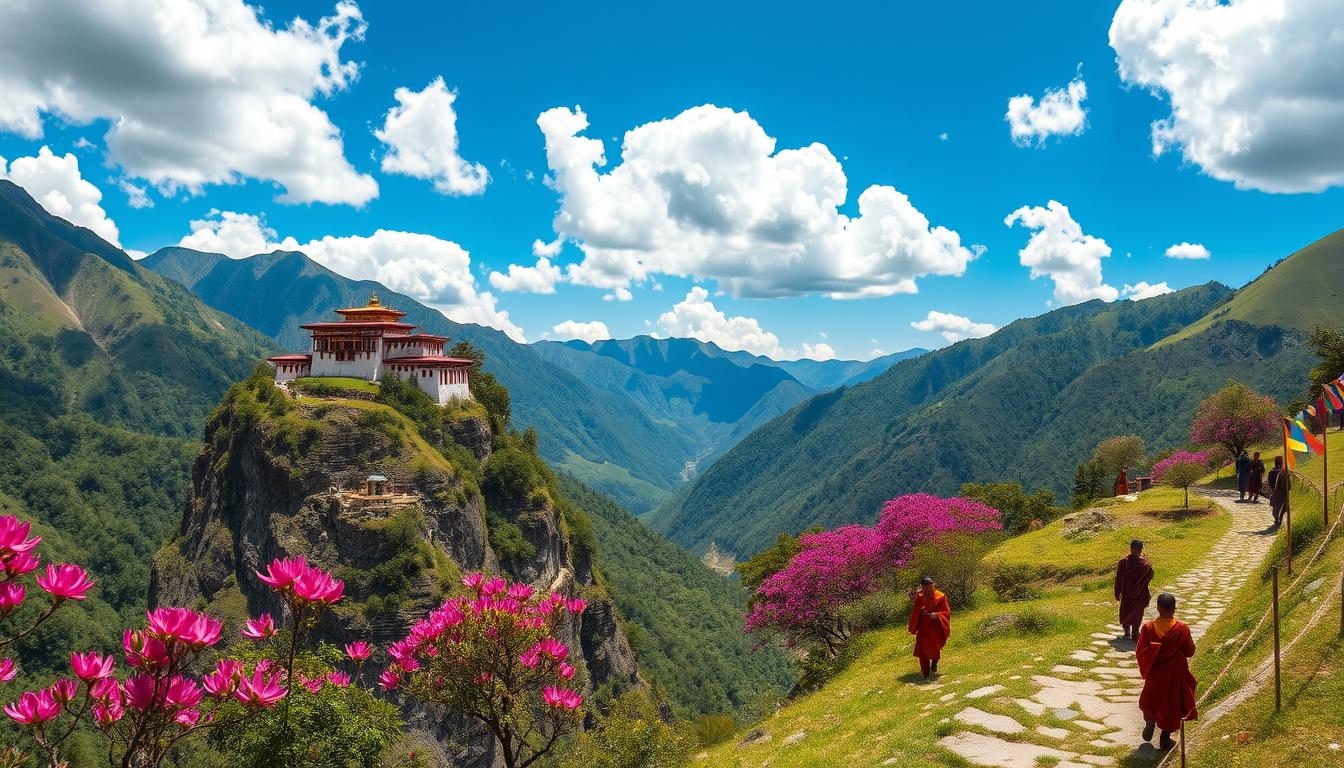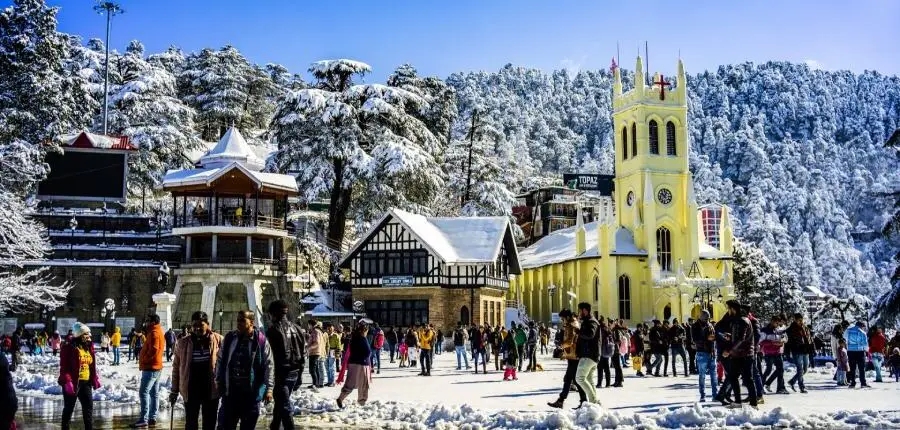Kashmir, often called "heaven on earth," is not only known for its breathtaking landscapes but also for its rich and unique culinary traditions. Nestled in the lap of the Himalayas, the region boasts a vibrant food culture that blends Central Asian, Persian, and Indian influences, resulting in a distinctive and flavorful cuisine. At the heart of Kashmiri cuisine is its use of aromatic spices, rich gravies, and slow-cooked meats. The food reflects the region’s cultural diversity, with Hindu Pandits and Muslim Kashmiris both contributing to the culinary landscape. Spices like saffron, cardamom, cinnamon, fennel, and Kashmiri red chili lend an unmistakable aroma and color to the dishes, while yogurt and dried fruits add richness and texture.Let’s explore some of the best and iconic dishes of Kashmir which are a must try.
1.Rogan Josh
A signature dish of Kashmir, Rogan Josh is a fragrant lamb curry known for its deep red color, which comes from Kashmiri chilies. Despite the fiery hue, the dish is mildly spiced, relying more on aromatic spices like cardamom and cinnamon for flavor. The name Rogan Josh is derived from two Persian words: Rogan, meaning "oil," and Josh, meaning "intense heat" or "passion." This reflects the dish's signature style—meat simmered in a rich, spiced oil-based sauce. The dish has Persian roots, introduced to Kashmir by the Mughals, who were deeply influenced by Central Asian culinary practices. While the dish appears fiery red, it is actually not overwhelmingly spicy, balancing heat with deep, aromatic flavors. Rogan Josh is traditionally served with steamed basmati rice or Kashmiri naan, allowing the flavors of the dish to shine through. It’s often part of the elaborate Wazwan feast, a multi-course Kashmiri meal, though it can also be enjoyed as a standalone dish. What makes Rogan Josh a standout dish is its ability to deliver bold, layered flavors without overwhelming heat. It strikes the perfect balance between aromatic spices and the rich, hearty taste of slow-cooked lamb. Rogan Josh is more than just a curry—it's a reflection of Kashmir’s history, culture, and love for food.
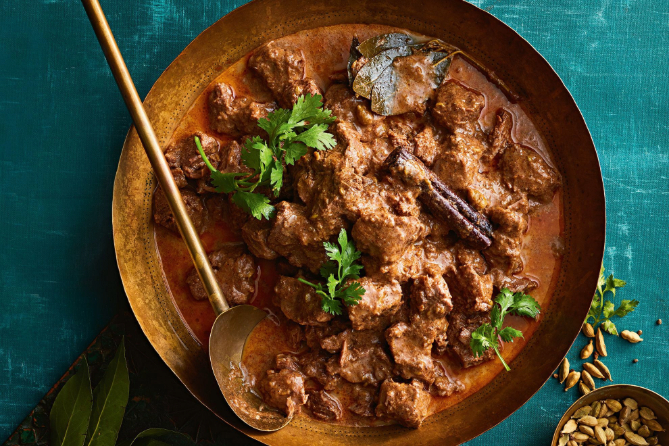
2.Gushtaba
Gushtaba is a crown jewel in the culinary tradition of Kashmir, often referred to as the “king of Kashmiri dishes.” This rich, creamy delicacy of meatballs simmered in a yogurt-based gravy is an integral part of the elaborate Wazwan feast, which symbolizes Kashmiri hospitality, royalty, and tradition. Gushtaba is typically served as the final dish of the Wazwan, signifying the grand conclusion of a lavish meal. The dish consists of tender meatballs made from minced mutton, finely pounded until smooth, mixed with aromatic spices, and cooked in a tangy yogurt-based gravy. The meatballs are first cooked in a spiced broth before being transferred into the yogurt-based gravy, where they are gently simmered. The slow cooking allows the meatballs to absorb the flavors of the spices while remaining tender and juicy. The final dish is a luxurious, creamy blend of textures and flavors that encapsulate the essence of Kashmiri cuisine. Gushtaba is traditionally served with steamed rice, which helps balance the richness of the dish. The yogurt-based gravy pairs wonderfully with the lightness of rice, allowing the flavors to shine through.
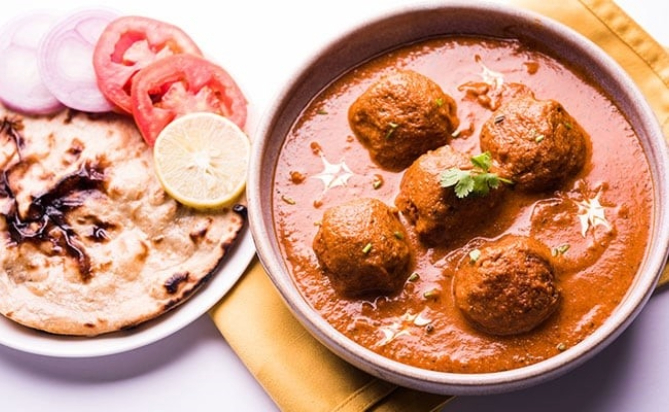
3.Yakhni
Yakhni is a classic dish from the rich culinary heritage of Kashmir, known for its mild yet deeply flavorful profile. This delicate yogurt-based mutton curry is a departure from the heavily spiced dishes often associated with Indian cuisine, making it a perfect example of the subtlety and elegance that Kashmiri food can offer. Yakhni is traditionally prepared with tender pieces of lamb or mutton, simmered in a fragrant broth of yogurt and aromatic spices. It’s a soothing, comforting dish that showcases the region’s love for slow-cooked, soul-warming food. The word Yakhni is derived from the Persian term for "stock" or "broth," which hints at the dish's origins. Persian influence is evident in many Kashmiri dishes, and Yakhni is one of the finest examples of this fusion. Yakhni's preparation is all about balance and patience. The meat is first boiled with spices to create a light stock, ensuring the meat remains tender. Meanwhile, the yogurt is whisked until smooth, often with a little flour to stabilize it and prevent curdling during cooking. Once the meat is cooked, it's gently simmered in the yogurt-based broth along with the aromatic spices. Yakhni is typically served with steamed basmati rice, allowing the fragrant gravy to be fully enjoyed. The simplicity of the rice perfectly complements the richness of the sauce. Yakhni is a dish that highlights the artistry of Kashmiri cuisine. Its mild flavors, silky texture, and fragrant aroma make it a standout in a region famed for its bold and complex dishes.
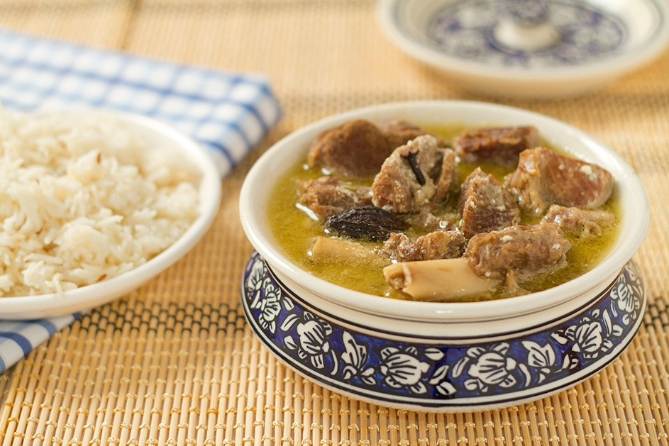
4.Kashmiri Pulao
Kashmiri Pulao is a rich and aromatic rice dish that reflects the opulence and vibrant flavors of Kashmiri cuisine. Unlike traditional Indian pulao or biryani, Kashmiri Pulao is subtly spiced and often garnished with dried fruits, nuts, and saffron, giving it a slightly sweet and luxurious flavor. It's a dish that brings together the essence of Kashmiri culture—delicately balanced flavors, beautiful presentation, and a hint of royalty. Kashmiri Pulao is a unique rice dish that showcases the region’s love for fragrant spices and dried fruits. It stands out for its richness in texture and taste, combining the softness of basmati rice with the crunch of almonds, cashews, and the sweetness of raisins. The dish is typically infused with saffron, adding a beautiful golden hue and a distinct flavor that elevates the entire meal. One of the unique features of Kashmiri Pulao is its balance of sweet and savory flavors. The natural sweetness of the dried fruits, combined with the aromatic warmth of the spices, creates a harmonious contrast that sets this dish apart from other rice dishes. Kashmiri Pulao is often reserved for special occasions, festivals, and weddings, where it serves as a centerpiece dish. Kashmiri Pulao pairs beautifully with rich, spicy curries like Rogan Josh or Yakhni, where its subtle sweetness and richness balance the bold flavors of the meat dishes. Kashmiri Pulao is a dish that speaks of royalty, tradition, and the rich culinary heritage of Kashmir.
.jpg)
5.Dum Aloo
Dum Aloo is one of the most popular and beloved dishes in Kashmiri cuisine, famous for its rich flavors and vibrant spices. It’s a dish that elevates humble potatoes to a gourmet level, slow-cooked to perfection in a yogurt-based gravy infused with a mix of aromatic spices. This flavorful delicacy is a mainstay in Kashmiri households and is often served during special occasions and festive meals. Dum Aloo originates from the Kashmiri Pandit cuisine, which is known for its intricate use of spices and a focus on vegetarian delicacies. The Kashmiri Pandit community is famous for its rich culinary traditions, where vegetarian dishes like Dum Aloo take center stage. The dish is named for its cooking technique—dum, meaning slow-cooked or cooked under pressure, which allows the potatoes to absorb the flavors of the spices and become melt-in-the-mouth tender. The hallmark of Dum Aloo is its slow-cooking method, which allows the potatoes to absorb the spices fully. Dum Aloo is traditionally served with steamed basmati rice, allowing the flavors of the dish to shine through. It also pairs well with Indian flatbreads like naan, roti, or paratha. The creamy, spiced gravy makes it a versatile dish that complements a variety of side dishes. Dum Aloo is a dish that exemplifies the richness and diversity of Kashmiri cuisine. Whether enjoyed as part of a festive meal or a comforting home-cooked dinner, its flavorful, aromatic gravy and tender potatoes make it a dish that pleases the palate with every bite.
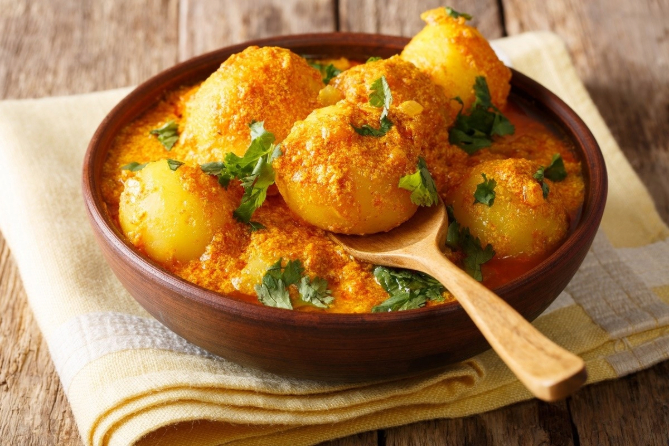
6.Wazwan
Wazwan is the epitome of Kashmiri culinary tradition—a grand, multi-course meal that is deeply intertwined with the culture and heritage of the region. Often prepared for weddings, festivals, and other special occasions, this lavish feast showcases the richness of Kashmiri cuisine with a series of meticulously prepared dishes that range from tender meat curries to delicate rice preparations. The word Wazwan is derived from two words: Waz, meaning chef or cook, and Wan, meaning a shop or place where food is prepared. A Wazwan is traditionally prepared by highly skilled chefs known as wazas, who are trained in the art of cooking this elaborate meal. A traditional Wazwan consists of 36 courses, though smaller versions with 7, 9, or 11 courses are also common. Each course is meticulously crafted and follows a specific order, with the focus primarily on meat-based dishes, particularly mutton. Wazwan is traditionally served on a large platter called a trami, shared by four people, reflecting the communal nature of Kashmiri meals. The food is served in courses, with the guests sitting together on the floor, eating with their hands. The waza (master chef) is central to the preparation of the Wazwan. Wazas come from generations of chefs who have passed down the intricate techniques and recipes required for this grand feast. Wazwan is unique not only because of the elaborate number of dishes but also because of the depth of flavor and the complexity of the cooking techniques involved It is a celebration of life’s special moments, bringing together families and communities through the joy of food.
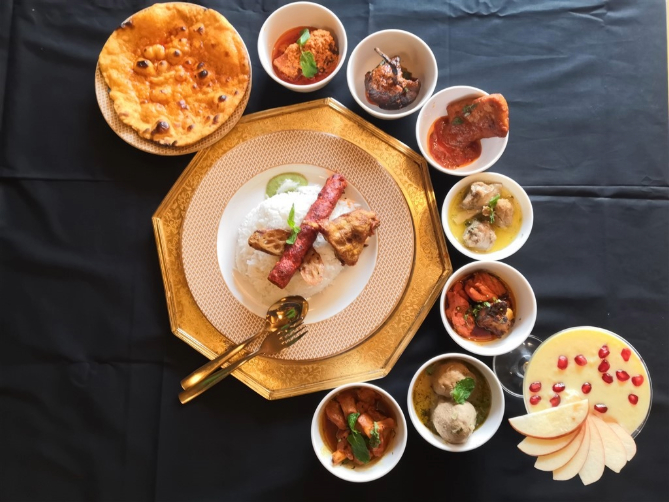
7. Phirni
Phirni is a classic Kashmiri dessert that exudes richness, fragrance, and delicacy. This creamy, rice-based pudding is often flavored with cardamom, saffron, and rose water, making it a beloved treat served during festivals, weddings, and special occasions. Simple yet elegant, Phirni is known for its smooth texture and subtle sweetness, often garnished with chopped nuts and dried fruits. Phirni's simplicity lies in its minimal ingredients, each of which plays a key role in building its signature texture and taste. In Kashmir, Phirni is a must-have sweet at weddings and is served in small, individual earthen pots known as shikoras, which enhance its flavor and presentation. Phirni holds a special place in Kashmiri celebrations, particularly weddings. It is usually served after the grand Wazwan feast, offering a light and sweet end to the rich and spicy meal. The use of saffron, cardamom, and almonds reflects the opulence of Kashmiri cuisine, where even simple desserts are made with care and luxury ingredients. Phirni is loved for its simplicity and elegance. Its smooth texture, balanced sweetness, and aromatic flavors make it a perfect dessert to finish off a rich meal. Phirni is a dessert that encapsulates the beauty of Kashmiri cuisine—simple ingredients transformed into something extraordinary through careful preparation and the use of fragrant spices.
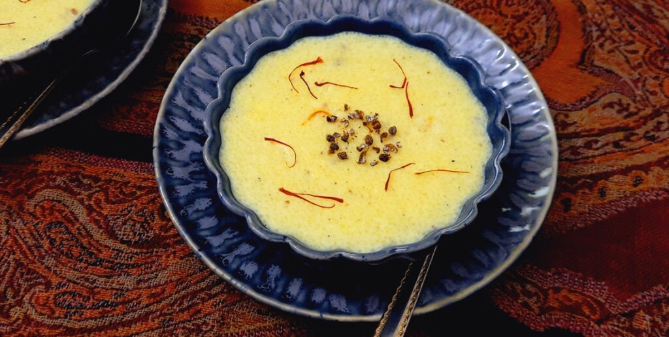
For anyone looking to explore Kashmir beyond its scenic beauty, the culinary journey through its rich and flavorful cuisine is a must. The unique combination of spices, slow-cooked techniques, and the warmth of Kashmiri hospitality make it a memorable gastronomic experience.


